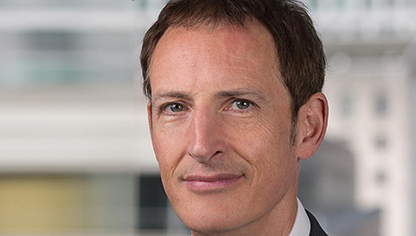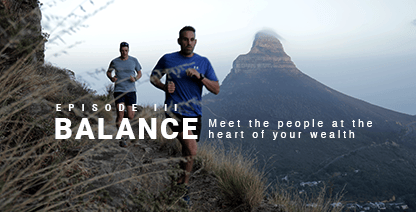Get Focus insights straight to your inbox
As I enter week three of working at home, the daily routine is becoming quite normal. I have commandeered a large TV screen into which I have plugged my laptop, and also set up a standing desk at the breakfast bar in the kitchen. There are tales of people and businesses adapting to the new circumstances across the newswires, and if we can be optimistic about anything it is the ability of the human race to rebalance in the face of adversity.
In terms of our business, it is important for you to know that we are functioning as close to normally as possible. Most of the firm already had remote access capabilities to provide working flexibility, especially when travelling on business. The main difference now is that nobody is travelling. The system’s capacity has also been upgraded to ensure that we can all log in simultaneously.
The greater use of video calls, which is providing insights into home life of colleagues, has lead to some psychologists suggesting that this will create a greater sense of community in the work place when we return to the office.
Obviously, the one facet of our business that has completely changed is personal connectivity, but even here the use of video conferencing applications has enabled virtual meetings to be held very successfully. Examples include last week’s Global Investment Strategy Group and Asset Allocation Committee meetings, more on which below. As an aside, it also gives an interesting glimpse into the home life of one’s colleagues, including book choices (the carefully curated bookshelf), curtain material, leisure wear and shaving habits.
We have even been introduced to various children and pets! Some psychologists are already suggesting that such personal interactions will create a greater sense of community in the work place when we return to the office. Another silver lining.
Our research department convenes every day at 7.30am and 4.30pm to set the day’s agenda, share news and views, and discuss what we can do even better tomorrow. It’s notable that fewer people enable video in the morning! At 8.30am we run our normal morning meeting on a telephone dial-in (enabling the host to “mute all participants” so that we don’t hear the crunch of cornflakes in the background). In this we round up all the latest economic, market and company news as well as providing analyst updates on sectors and funds.
Our weekly Research Forum, which features a “deep dive” into one or two subjects continues at midday every Monday, and to this we have added a 2pm strategy update on Monday, Wednesday and Friday given the fast-changing macro environment.
Contact with companies and external fund managers is also continuing via conference and video calls. Indeed, we are now seeing investment banks organise virtual conferences with many dozens of presenters and hundreds of participants. It will be interesting to see how much of this sticks in the post-lockdown world.
Moving on to markets, last week was a lot better for risk assets, no doubt to some degree as the result of a bounce back from the carnage of the previous week. The key judgement made by investors was that the world’s central banks have delivered enough liquidity (and will deliver more if necessary) to preserve the integrity of the financial and banking systems. This was a prerequisite for some semblance of market stability.
One estimate I have seen today calculates that over 5% of global Gross Domestic Product has been committed in fiscal support already.
Allied to this was an increasingly robust fiscal response from governments around the world, promising all manner of support from cash hand-outs to loan guarantees. One estimate I have seen today calculates that over 5% of global Gross Domestic Product has been committed in fiscal support already. Given that the biggest spenders in percentage terms (Japan and Germany) are closer to 20%, and that the US’s package is close to 10%, one can only see this contribution getting larger.
We fully acknowledge that the scale of debt and size of central bank balance sheets that will result raise a whole new layer of uncertainty for the future, but also believe that getting to the future without allowing the world to fall into a prolonged depression is more important.
As I outlined last week, the second area of focus is the progress of the virus. Here the news is more mixed. On the one hand there is clear evidence building that isolation strategies are successful in reducing the number of new cases. On the other hand, several countries (most importantly the United States) and most of the African continent are only in the initial phase of the “S-Curve” in terms of the acceleration of new cases and associated fatalities. The news is definitely going to get worse before it gets better, and we are going to be faced with grim headlines.
Much uncertainty remains around infection and mortality rates, which is unnerving. The more people who can be tested as soon as possible the better, but there is a depressingly large difference in the capabilities displayed by different countries. A successful testing programme will not only deliver more clarity on the progress of the epidemic, it will also enable more people to be released from isolation, and thus a faster return to some semblance of economic normality.
Inside Out of the Ordinary: Meet the people at the heart of your wealth
Finally, much uncertainty remains around vaccination and immunity. Most experts seem to agree that a vaccine could be twelve months or more away, and there is no consensus on how long immunity might last for people who have recovered from the virus. SARS, for example, confers immunity for two years on average. If that is the case for COVID-19, we are looking at the need for regular booster vaccines – and that is assuming that the virus remains relatively stable.
On the economic front, last week I described the progress of economists’ downgrades to growth forecasts as a “race to the bottom”. That race is still on, but nobody can see where the finish line is. The latest crop I have seen suggest 2020 GDP falling around 2% globally, but with most of the damage confined to the second quarter. The risk is that isolation has to continue in some form for longer than most people’s current estimate of three months. The UK’s Deputy Chief Medical Officer has not ruled out as long as six months. And the longer it goes on, the more companies and individuals will find themselves stretched financially.
A Professor of Supply Chain Management has suggested a lot of the world’s logistics capacity will not be in the right place when world trade starts to ramp up again, slowing the recovery.
I also heard an interesting view last week from a Professor of Supply Chain Management. He suggested that a lot of the world’s logistics capacity will not be in the right place when world trade starts to ramp up again, slowing the recovery. He likened it to turning up at the supermarket to find all the shopping trolleys scattered around the car park instead of neatly lined up by the door.
This all translates into extreme downward pressure on aggregate company earnings. Many companies have withdrawn their guidance for the year, and analysts are struggling to arrive at precise estimates. Strategists have a freer hand, and expected falls of 40% or more at index levels this year are not uncommon. However, it is also expected that there will be a rapid recovery in 2021.
Looking at a 2020 forward price/earnings ratio is meaningless. 2021 might be more appropriate, but for now we might have to rely more on longer term estimates of, for example, sustainable returns on capital versus price-to-book ratios. This sort of analysis proved useful in picking winners during the financial crisis.
I touched last week on the risk to dividends, and that is even more apparent now. It appears almost inevitable, for example, that banks, who tend to be big payers, will be told to hold back all payments to preserve capital. Our initial projection for 2020 suggests a 30% reduction in payouts, so be very careful about relying on historical yield data.
This will obviously raise challenges for clients who rely entirely on dividends for income, but at least will be mitigated to some degree by the fact that discretionary spending is currently much reduced. However, we highlight the risks to future returns and income-generating capability that will be created by supplementing income by dipping into capital at current levels. It might be better to hunker down for a while if at all possible in anticipation of more normal times in 2021.
Finally (and with apologies for the longer text than normal, but I think there are extenuating circumstances!), onto portfolio rebalancing. This was another component of last week’s rally in equity markets, and might be a feature over the next few days too, given that it tends take place at month ends (and especially quarter ends). Most professionally-managed portfolios adhere to some sort of strategic asset allocation benchmark based upon the trade-off between expected returns and risk (as measured by volatility).
When markets move sharply, as they have recently done, portfolios have to be brought back into line to maintain the risk/reward balance (unless the manager explicitly changes the tactical asset allocation). The recent falls of equities relative to bonds created the largest potential rebalancing demand for equities on record.
We, too, are rebalancing portfolios, especially as we see better long-term value available now, even if that does involve “looking through” the current crisis. Having said that, we are not calling the bottom. There is plenty of volatility ahead. Even so, in last week’s GISG and AAC meetings, we did see sufficient value in one segment of the market to suggest adding further to positions, and that was corporate credit. Both Investment Grade and High Yield corporate bonds have been hit very hard in this downdraft, with the falls exacerbated by reduced liquidity.
Yield spreads over government bonds, while not at all-time highs, are within the highest few percentiles ever recorded. Yes, there will be casualties, but persistently high rates of default are now being priced in. Furthermore, central banks appear more willing to provide a liquidity backstop, as well as there being government-backed measures to provide support.
The closing message, at a time of apparently unremitting gloom and doom, is that we are already starting to position for a world after this COVID-19 outbreak. And if we experience further dislocation we will be looking to take advantage of more attractive long-term opportunities.
About the author

John Wyn-Evans
Investment strategist
John is Head of Investment Strategy for Investec Wealth & Investment UK, is a member of the Global Investment Strategy Group, and is Chair of the Investec & Investment UK Asset Allocation Committee. John graduated from Exeter University in Modern Languages in 1984. He spent 27 years as an institutional stockbroker with Merrill Lynch and Lehman Brothers, before moving to investment management in 2011 and joining Investec in 2013. John is an Everton FC supporter.










